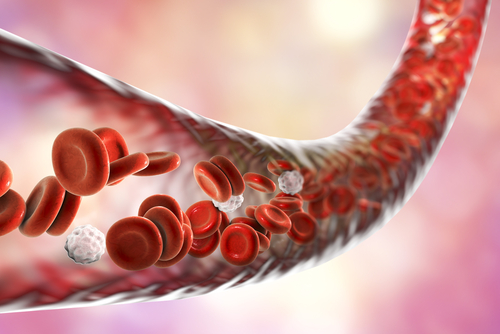Tips for Dealing with Acrocyanosis When You Have Cold Agglutinin Disease
Written by |

Acrocyanosis is a blueish discoloration of the skin that occurs because of the blockage of small blood vessels, which leads to a lack of blood flow. Acrocyanosis usually appears in the hands and feet, but it also can occur in the nose, nipples and ears.
In cold agglutinin disease (CAD), the body produces antibodies that mistakenly attack red blood cells in cold temperatures, causing their destruction. The most common symptom of CAD is anemia, but acrocyanosis also is a CAD symptom.
Following are some tips for dealing with acrocyanosis caused by CAD:
Avoid cold exposure
It’s important to avoid cold when you have CAD. This is because the antibodies that attack the red blood cells are more prone to clumping, or aggregation, during cold exposure. The clumped blood cells and antibodies can block blood vessels, causing acrocyanosis. Avoiding exposure to cold should reduce this symptom.
Wear warm clothing
If you have to be out in the cold, make sure you wear warm clothing. Mittens are better than gloves for keeping your hands warm. Also, wear warm socks, even if you think you won’t be outside for very long.
Medication for acrocyanosis
In most cases, you can resolve acrocyanosis by reducing cold exposure and warming up after you are exposed. However, in severe cases, you may need medication.
Doctors sometimes treat acrocyanosis with antibiotics; they have used both penicillin and cephradine successfully.
You also should discuss with your doctor whether you may have any other conditions that could be causing acrocyanosis. Though some cases of acrocyanosis are caused by CAD, there are other conditions, such as rheumatoid arthritis, lupus, and some cancers, that also can cause acrocyanosis. Your doctor can consider whether this is possible in your case and whether you need to undergo tests or other treatments to narrow down possibilities.
Last updated: June 4, 2020
***
Cold Agglutinin News is strictly a news and information website about the disease. It does not provide medical advice, diagnosis, or treatment. This content is not intended to be a substitute for professional medical advice, diagnosis, or treatment. Always seek the advice of your physician or other qualified healthcare providers with any questions you may have regarding a medical condition. Never disregard professional medical advice or delay in seeking it because of something you have read on this website.




